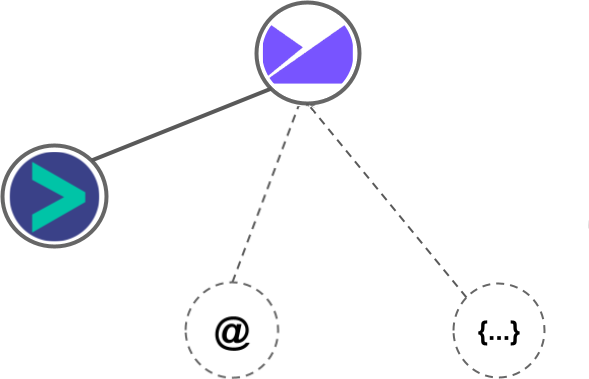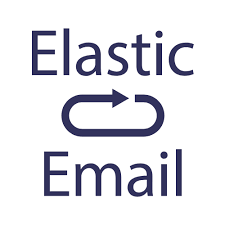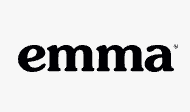Woodpecker vs Campaign Monitor
Hyperise integrates with 100's of sales and marketing tools, many of which are in the Email Marketing category. With so many to choose from it's sometimes hard to know which is best, but don't worry, we've got your covered.
In this comparison guide we're going to look at the Highlights, Pros, Cons and Pricing of Woodpecker and Campaign Monitor. We'll also delve into the details of which offers the best personalization options within Email Marketing, with there respective Hyperise integrations

Woodpecker
Pricing: Woodpecker Email Marketing platform offers a variety of pricing plans based on the number of email credits per month, the number of users, and the features included. The pricing plans start at $40 per month for 1 user and 1,000 email credits, and go up to $520 per month for 10 users and 20,000 email credits. Woodpecker also offers a customized plan for businesses with larger email marketing needs.
Vs

Campaign Monitor
Pricing: Campaign Monitor offers several pricing plans for their email marketing platform based on the number of subscribers. For up to 500 subscribers, the Basic plan starts at $9 per month billed annually or $12 per month billed monthly. The Unlimited plan, which includes unlimited emails and additional features, starts at $29 per month billed annually or $39 per month billed monthly, for up to 500 subscribers. There are also pricing plans available for larger subscriber lists.
Woodpecker vs Campaign Monitor Highlights
Woodpecker is a personalized email outreach platform that focuses on prospecting, delivering follow-up campaigns, and scheduling meetings with prospects. On the other hand, Campaign Monitor is a widely-used email marketing platform that offers email automation, segmentation, and personalization features for businesses of all sizes.
The main difference between the two platforms is their focus. Woodpecker is designed for businesses that rely heavily on outbound sales and personalized outreach, while Campaign Monitor offers a wider range of email marketing tools, such as email automation and advanced analytics. Additionally, Woodpecker is more suited for small-to-medium-sized businesses, while Campaign Monitor is geared towards larger enterprises with more complex email marketing needs.
Woodpecker vs Campaign Monitor Pros
Woodpecker Pros
- Woodpecker has a more user-friendly interface that is easy to navigate, while Campaign Monitor's interface can be overwhelming for new users.
- Woodpecker offers a unique feature called "Reply detection" which automatically tracks and manages replies from recipients, while Campaign Monitor lacks this feature.
- Woodpecker provides detailed analytics such as open rates, click-through rates, and reply rates for each email campaign sent, while Campaign Monitor's reporting features are relatively basic.
- Woodpecker offers advanced automation features such as time zone detection and follow-up email sequences, while Campaign Monitor's automation capabilities are limited.
- Woodpecker offers A/B testing for email campaigns, while Campaign Monitor allows for A/B testing only for subject lines.
- Woodpecker offers email verification services to ensure that the email addresses on a given list are valid, while Campaign Monitor does not provide this service.
- Woodpecker offers a more affordable pricing plan compared to Campaign Monitor, making it more accessible for small businesses and startups.
Campaign Monitor Pros
- Campaign Monitor offers a wide range of email templates for different industries, whereas Woodpecker requires users to create email templates from scratch.
- Campaign Monitor provides a drag-and-drop email builder, making it easy for users without HTML knowledge to create professional-looking emails. Woodpecker lacks this feature.
- Campaign Monitor offers an intuitive interface and user-friendly dashboard which is easy to navigate. Woodpecker's interface can be overwhelming and difficult to navigate for beginners.
- Campaign Monitor provides advanced tracking and reporting features, including email click-through rates, open rates, and forwards. Woodpecker lacks some of the tracking and reporting features which may be important for some users.
- Campaign Monitor offers integrations with a wide range of third-party applications such as Salesforce, Shopify, and Eventbrite. Woodpecker lacks some of the integrations campaigned monitor offers.
- Campaign Monitor provides excellent customer support and offers a knowledge base, support center, and live chat. Woodpecker only offers email support.
Woodpecker vs Campaign Monitor Cons
Woodpecker Cons
- Limited design customization options compared to Campaign Monitor
- Limited integration options with other platforms compared to Campaign Monitor
- No built-in features for A/B testing email campaigns
- No built-in option to resend an email campaign to non-openers
- Limited reporting features compared to Campaign Monitor
- No built-in unsubscribe management options
- Customer support is not available 24/7 like Campaign Monitor
Campaign Monitor Cons
- Campaign Monitor does not offer the ability to automate follow-up campaigns as effectively as Woodpecker.
- Campaign Monitor's user interface is not as intuitive as Woodpecker's.
- Campaign Monitor's pricing can be more expensive compared to Woodpecker, especially for larger email lists.
- Campaign Monitor may not be as well-suited for B2B email marketing campaigns as Woodpecker, which specializes in personalized outreach to prospects and customers.
- Campaign Monitor does not offer as many integrations with other platforms as Woodpecker, which can limit its usefulness for businesses that use multiple tools in their marketing stack.
Woodpecker & Campaign Monitor Hyperise Integrations
Woodpecker uses the Image embed method to integrate with Hyperise, giving a simple way to add personalized images to your messages.
Woodpecker makes the following data points available to Hyperise, to enable personalization in images used in outreach and linked out to your personalized website landing pages.

- Using business Email passed from Woodpecker, Hyperise is able to enrich business logo and website screenshots. In some cases, with a business Email we're also able to enrich profile images, subject to the business email having a publicly available profile.
- Using business Website passed from Woodpecker, Hyperise is able to enrich business logo and website screenshots.
- Business name
Woodpecker Integration Guide
Campaign Monitor uses the HTML code embed method to integrate with Hyperise, giving a simple way to add personalized images to your messages.
Campaign Monitor makes the following data points available to Hyperise, to enable personalization in images used in outreach and linked out to your personalized website landing pages.

- Using business Email passed from Campaign Monitor, Hyperise is able to enrich business logo and website screenshots. In some cases, with a business Email we're also able to enrich profile images, subject to the business email having a publicly available profile.
Campaign Monitor Integration Guide

 vs
vs  vs
vs  vs
vs  vs
vs 

 vs
vs  vs
vs  vs
vs 



 vs
vs  vs
vs  vs
vs  vs
vs  vs
vs 









 vs
vs  vs
vs 

















